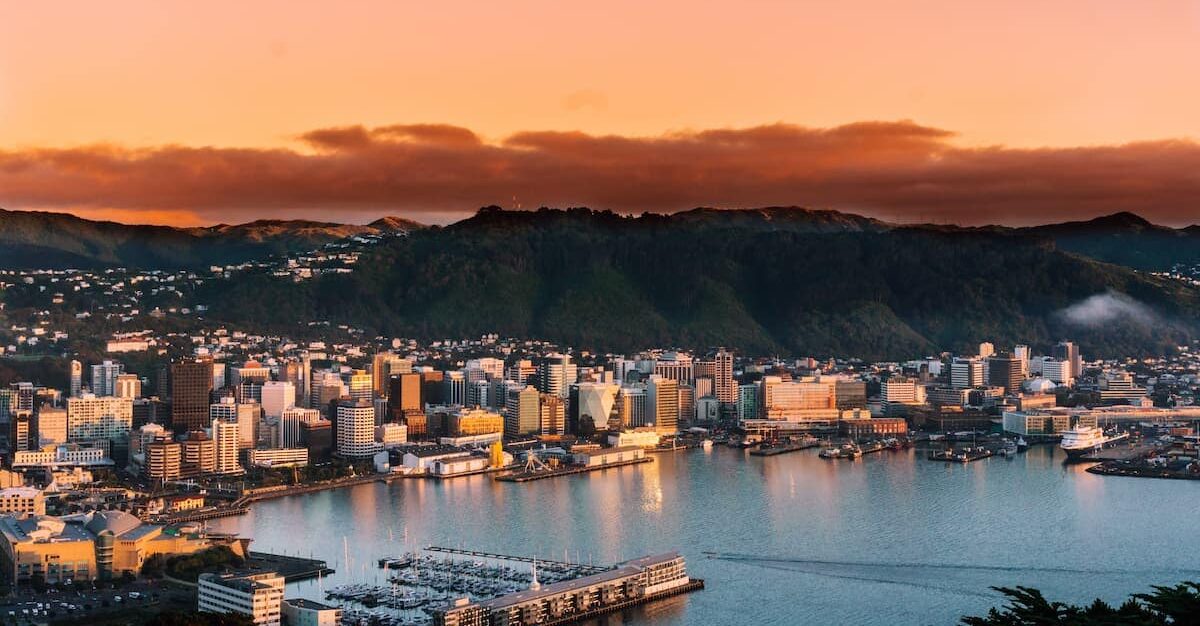
Go World Travel is reader-supported and may earn a commission from purchases made through links in this piece.
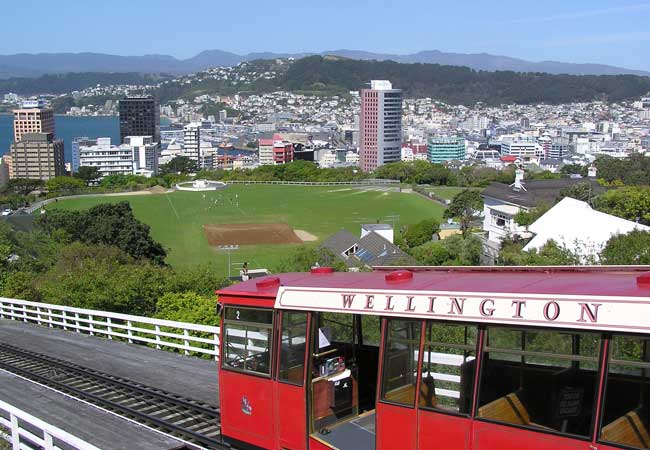
Why You Should Visit Wellington
Wellington does things differently. In a country whose charms are mostly the work of Mother Nature rather than humanity, Wellington, New Zealand is a city with its own identity.
Wellington has something for everyone, so if you’ve come to find fun activities, you’re in the right place. Before you read on, here’s a quick list of the most popular tours in Wellington and five fun places to stay in Wellington.
Top – 5 picks in Wellington
- 🚶 Discover the best of Wellington on this fully-inclusive day tour with lunch
- 🍷 Visit three of the regions best wineries and enjoy their Cellar Door experiences as you sample the world class products available with this guided tour
- 🏞️ Soak up the beautiful scenery while learning more about New Zealand’s unique ecological history in this excursion
- 📽️ Find out about how movie effects and props are made on a guided tour of this film industry leader located on Wellington’s Miramar Peninsula
- 🖼️ Beat the lines and see the Gallipoli exhibition before the doors open to the public at the Museum of New Zealand Te Papa Tongarewa with this Early Entry Ticket
🏘️Where to stay in Wellington
- Most scenic: Travelodge Hotel Wellington (⭐7.8)
- Most romantic: Wellington holiday home (⭐8.9)
- Top luxury stay: U Suites Kilbirnie(⭐8.7)
- Top budget stay: The Dwellington (⭐9.1)
Wellington, which is located at the southwestern tip of the North Island, is a worthy destination in itself, rather than a necessary eyesore in between national parks, or, like Auckland at times, a naked attempt at being an Asian-Pacific metropolis in the vein of big siblings Sydney, Singapore or Hong Kong.
By New Zealand standards, Wellington is not meteorologically blessed. Even their tourism slogans try to make the alliterative best of things when they call it Windy Wellington.
And upon my arrival, the city lives up to its reputation; the sky is overcast and grey, the air is moist. An optimist would call it bracing.
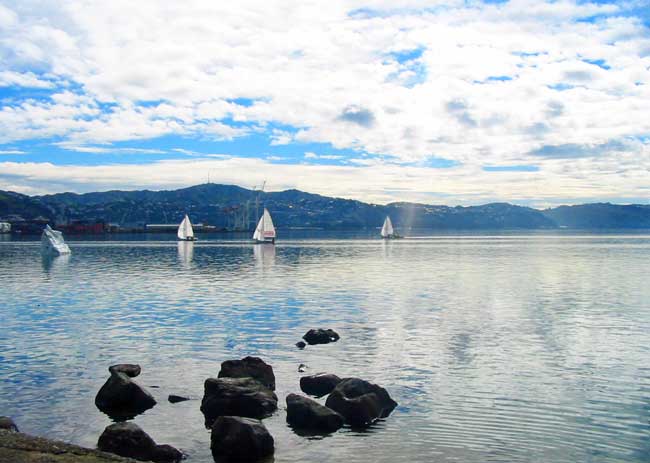
TRAVEL TIPS
- ✈️ Find the cheapest flights in WayAway
- 🛌🏽 Your perfect accommodation is on Agoda and Booking.com
- 🤳🏽 Make your trip more exciting with GetYourGuide tours
- 🚐 Book your transfer from Wellington Airport to Central Wellington City Centre Hotels on Viator
- 🚗 Rent a car for your comfortable trip with Rentalcars
- 🗃️ Insure your trip with Insubuy
A Visit to Wellington
Wellington is the capital of New Zealand and home of its government, yet it’s only the third largest city in terms of population. The advantage is that this makes the city compact and walkable, nestled as it is in the bosom of a valley, with hills on three sides and the sea before it.
The government meets in the Beehive, an iconic ugly-pretty building, but Wellington does not feel like a city of bureaucrats – certainly no more than it feels like a city of bohemians. In that sense, the city sets out its stall early.
Heading out of the airport we pass a peace sign next to the words ‘Welcome to Wellington, a nuclear-free city’.
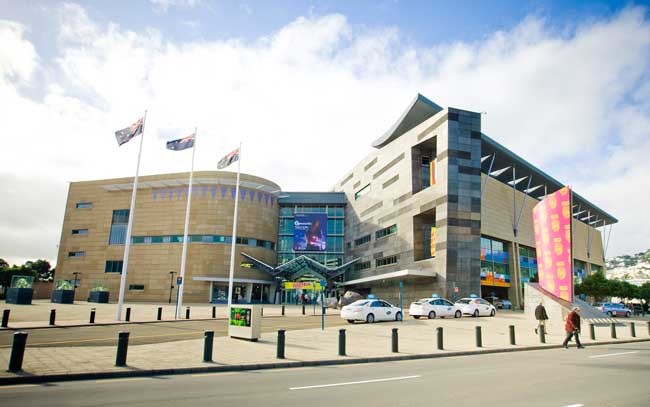
Museum of New Zealand Te Papa Tongarewa
Te Papa (‘Our Place’ in Maori) has stood on the waterfront since the late nineties, and has become, together with the omni-present Peter Jackson and his films, a symbol of the revitalisation of the country and the city.
One and a half million people visit every year, and if Wellington has one must-do it is this museum.
Many of the exhibitions at Te Papa, the national museum, have proven rather enduring, and some of the people who experienced exhibits like the ‘shaking hut’, which simulates earthquakes, as kids, could now be visiting with their own children.
Best Tips & Tools to Plan Your Trip
Other things well-remembered by tourists and schoolchildren alike include an audio-visual show of a junk shop coming to life, a reconstructed giant moa and the giant eagle hunting it, and, since 2007, the remains of a colossal squid caught in Antarctica.
What Te Papa will contain in the near future is difficult to say – with the 20th anniversary great changes are afoot and much of the aforementioned will be remodelled, updated or removed entirely.
In some cases it’s warranted – the ‘earthquake experience’, where a typical kiwi living room you’re standing in shakes and trembles every 20 minutes on the dot, is still focused on a ‘notorious’ earthquake from 1987, not the far more terrible events of the last few years.
Definitely sticking around for a while is Gallipoli – The Scale Of Our War, which tells the story of New Zealand’s bloodiest battle in WWI, with a great deal of multimedia, including larger-than-life, hyper-realistic statues created by Weta Workshop, the local film production design house that shot to fame with The Lord Of The Rings.
Also commemorating the centenary of the First World War is the Great War Exhibition, in a building marking the southern edge of the city centre.
Somewhat out of the way and noticeably less popular, it is nonetheless worthwhile, taking a broader view of the war and reconstructing idyllic pre-war Belgian villages and mud-spattered tanks under the watchful eye of Sir Peter Jackson himself, an aficionado of the period.
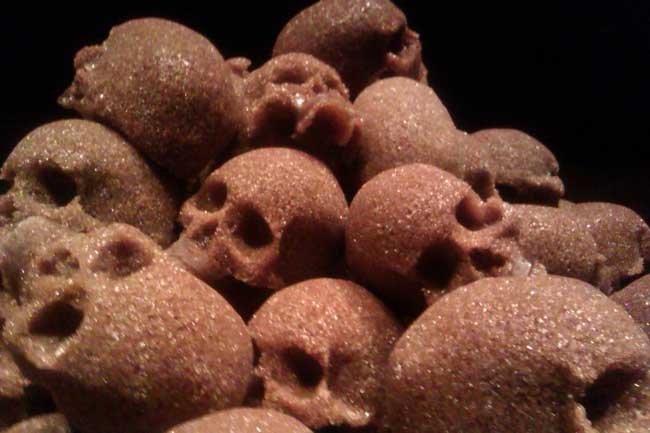
Some of Te Papa’s long-term exhibitions have already closed to make way for another art space, something Wellington is generally well-served by, not only at Te Papa but also the City Gallery, a 10-minute walk westwards.
Exhibitions included work commemorating Pacific Islanders who were enslaved on sugar plantations, like a pile of skulls formed out of raw sugar.
The showcase exhibition, however, featured an actual human skull, which rather leaves other provocateurs in the dust.
It is part of something of an altar, a contemporary artist’s (and perhaps witch’s) collection of personally significant objects, all part of the ‘Occulture’ exhibition which also included early studies by iconic occultist Aleister Crowley for his Thoth Tarot and centuries-old copies of Dante’s Inferno.
How long you spend at the City Gallery depends largely on the exhibitions on offer, but its location, only a brief walk over a bridge crossing a road to a waterfront boulevard, is ideal.
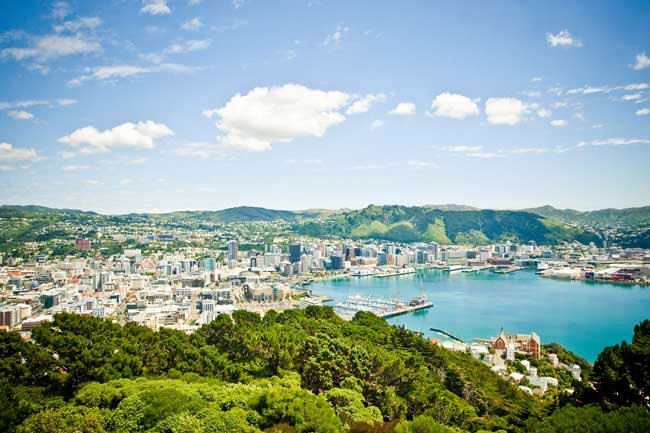
Mount Victoria
Then, there is the nature surrounding Wellington. You can start the walk up Mount Victoria to the lookout a little to the east of Courtenay Place or do what I did and take the Nr. 20 bus to the top and walk back down.
The view from Mount Victoria is indeed awe-inspiring, but any view is improved by having gravity as your ally rather than your enemy on the way there. Or don’t do what I did and take the bus back as well.
I walked down through the bush with the knowledge that a key scene from The Lord of the Rings in New Zealand, where the hobbits hide from the Ring-Wraiths, was filmed here, only a stone’s throw away from Peter Jackson’s studio at Miramar.
The whole of Mount Victoria is crisscrossed by paths, some especially for mountain bikers, a few of which rushed by me, taking a few near-vertical shortcuts down to the city’s edge.
On foot, it’s a bit rough going just for a picture of a filming location when the whole area is equally scenic.
For those keen on more Tolkien, the Weta Workshop in Miramar is also accessible by public bus.
The shop is filled with beautiful souvenirs of Middle Earth (and other projects Weta has worked on), and there are regular tours of the workshop itself, where orc swords and hairy hobbit feet and more were made.
Wellington Botanic Garden
A more civilized walk is through the Wellington Botanic Garden, complete with a rose garden and duck pond.
Also passing through here is the cable car, a charmingly rickety funicular that trundles its way down up and down again from Lambton Quay to a viewing platform on top of the hill, where there’s a space observatory, and entry to the gardens.
You can wind your way down to the city in a miniature version of the Mount Victoria walk if you don’t want to take the cable car back down again.
The cable car was opened in 1902 to entice people to the new neighbourhood of Kelburn on top of the hill, and it has been a landmark of the city ever since.
It isn’t just tourists who use it, either; it’s remained in use for commuters, and Victoria University is on the way as well.
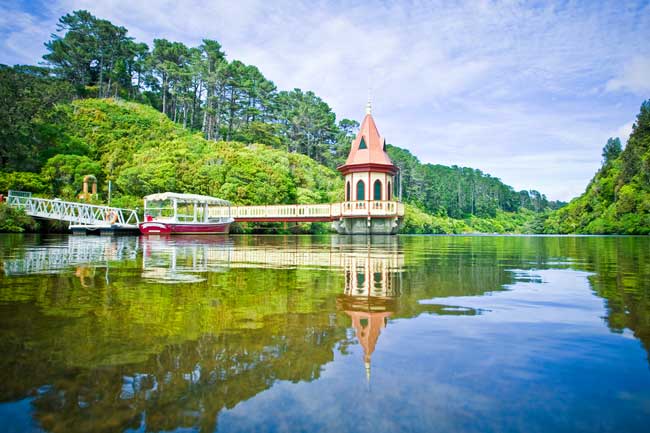
Zeelandia
Zealandia, a preserve for local flora and fauna (chiefly of the avian variety) is much advertised around town, and there’s a shuttle to it from the top cable car stop.
But something of a hidden gem is the Wellington Zoo, which is just a quick bus ride south of the city centre.
Wellington Zoo
The Wellington Zoo has been built not so much on top of the hill as on its side, so even walking between the cheetahs and the giraffes can make for some fairly steep climbing. It does make for some very scenic views, however.
My favourite spot is the chimpanzee habitat, where you can see our closest relatives resting, playing and politicking (the keeper in attendance told us the alpha male and female have recently relinquished their positions to younger apes.
Apparently without much hassle), while beyond you can see a sports ground where other apes test their strength (chimpanzees outmatch us seven to one on that score).
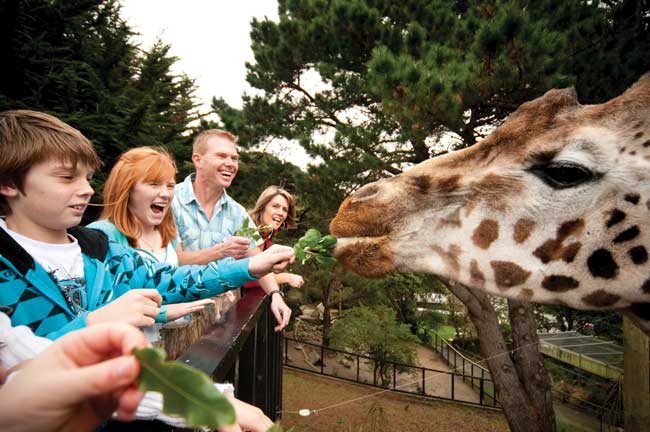
Catching a couple of the zoo keepers’ talks at the various animal enclosures is also worth your while, because they are engaging and will answer your questions afterwards.
Often, this time includes the feeding of the animals, and for some of the more camera shy, like the tiger, this may be the only chance to see them up close.
The whole zoo has a naturalistic design, animals being separated from humans by streams, brushwood fencing and rock features rather than cages wherever possible.
Wellington at Night
By night Wellington comes alive. Courtenay Place and Cuba Street, in particular, fill up with revellers of a mainstream and boho bent respectively. For the last few years, Friday and Saturday nights have played host to the Night Market.
It is like a little bit of Asia in Wellington, although the food stalls serve food from plenty of other corners of the globe. Live music tops off the evening.
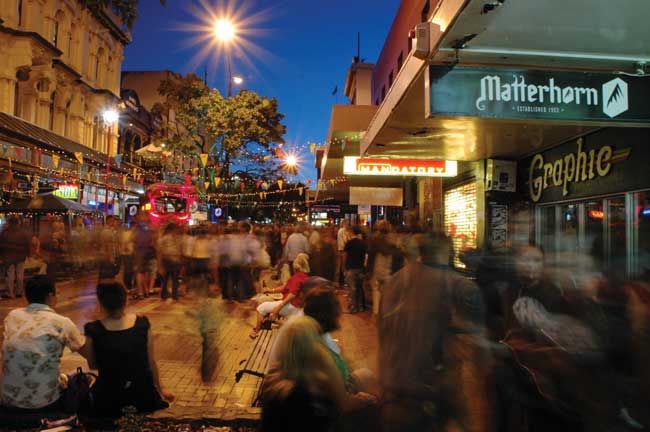
Wellington Creative Scene
Wellington is the creative and performance capital of New Zealand. Though Auckland has the edge in terms of work because of all the TV shows, Wellington hosts much of the talent.
Toi Whakaari, the country’s drama school, is based here, and both it and Victoria University supply the local scene with plenty of fresh faces, both actors and playwrights.
The city has a number of theatres, from an opera house which also hosts musicals and touring comedians to more experimental, and often local work. Circa Theatre, scenically located on the waterfront next to Te Papa.
It specialises in quality, smaller scale work and showcasing actors. BATS is Wellington’s home for new and experimental work, and hosts events like the New Zealand Improv Festival.
And it is not just theatre, but also film, which has become Wellington’s and New Zealand’s main cultural export over the years. From the quiet suburb of Miramar, Peter Jackson built a cinematic behemoth in the Lord of the Rings films.
And Weta Workshop, which helped him do so, has been a go-to supplier of props and costumes to Hollywood ever since.
No wonder, then, that the city has also become known as Wellywood, although when the city council got the idea to place this nickname in large white letters on a hillside it met with strong opposition.
Wellington is too scruffy to make a good ersatz LA, and it is fine with that, instead taking great pride in the title given it by Lonely Planet, the coolest little capital in the world.
Returning to the airport, the weather has improved. A nearby hillside spells out Wellington in large, white letters (the marketers mostly got their way in the end, it seems), permanently in the process of being blown away by a self-mocking gust of wind.
But the city itself endures, and is worth returning to.
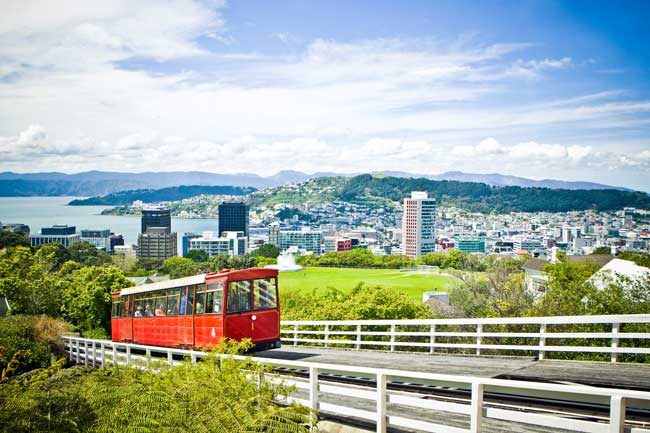
If You Visit Wellington:
Where to stay in Wellington
The Cambridge Hotel is cheap, but in a charming way; a recently restored heritage building with dorm beds from $28 and private rooms from $70. It’s been around since 1883, and played host to Queen Elizabeth II in the 1960s.
A statue of her great-great-grandmother Victoria stands across from the hotel, and Courtenay Place is just around the corner.
The QT Museum Hotel has views of Lambton Harbour, and it used to be even closer, having been moved from its waterfront location lock, stock and barrel for the benefit of Te Papa.
It’s taken the move in stride, though, and is now filled with quirky modern art pieces itself, hence the name. Rooms start at $259; more expensive ones have private balconies.
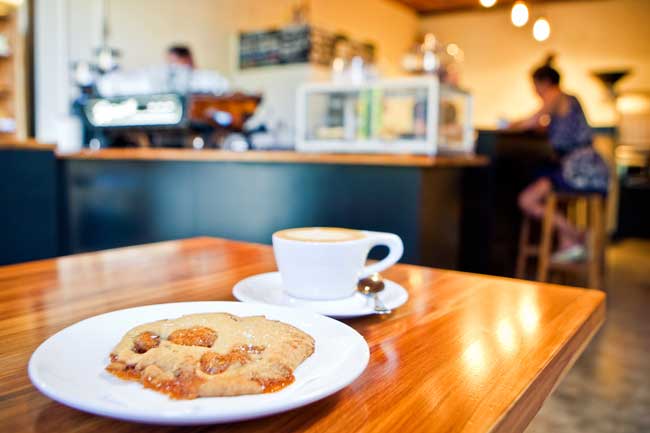
Where to Eat in Wellington
The coffee is famous and omnipresent, and Wellington is said to have more cafes per capita than New York. Wellington’s cafe culture does have a tendency towards hipsterdom, which has its up and downsides.
You’ll find unusual ingredients and options free of meat or gluten or other things, but you’ll also be paying for the privilege, and you may find your cocktail served in a mason jar.
Wellington wears its progressive politics on its (tattoo) sleeves, and on its storefronts. Fidel’s and Pravda provide the proletariat with sandwiches and burgers at bourgeouis prices.
Towards the top end of Cuba Street, Aunty Mena’s serves all-vegetarian Asian dishes in an unfussy (even bare bones) atmosphere. The counter-intuitively named Fisherman’s Plate is more known for its Vietnamese pho soup.
According to a newspaper clipping on the wall, even Viggo Mortensen is a fan. And from its permanent stand on Courtenay Place Tommy Millions sells pizza by the slice.
Shopping in Wellington
There is a department store called Kirkcaldie & Staines which fits in the Harrod’s mould (though, naturally, smaller), but the city’s forte is in small boutiques, whether fashion, home and design, or vinyl and comic books.
Wellington has a broad choice for literati, from the swanky new releases at Unity Books, to the geek collection of genre fiction and role-playing supplies at Arty Bee’s Books, to Pegasus Books.
It is filled to the rafters with tomes dusty and otherwise, and feels like nothing so much as stepping into the office of an eccentric humanities professor. Or, appropriately to the place, a wizard.
Inspire your next adventure with our articles below:
Author Bio: Michael Aarts is a writer and traveller who was born in The Netherlands and is currently based almost exactly on the other side of the planet in New Zealand. You can find him @WorldsWandering
- How to Get Around in Sydney: A Local’s Guide to Traveling Around Sydney - April 24, 2024
- The Low-Key Magic of Ghent, Belgium - April 22, 2024
- Discover the Hidden Charm of Extremadura in Spain - April 20, 2024

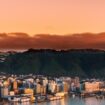
What a great list of things to see and do in Wellington! I’m definitely going to have to check some of these out!